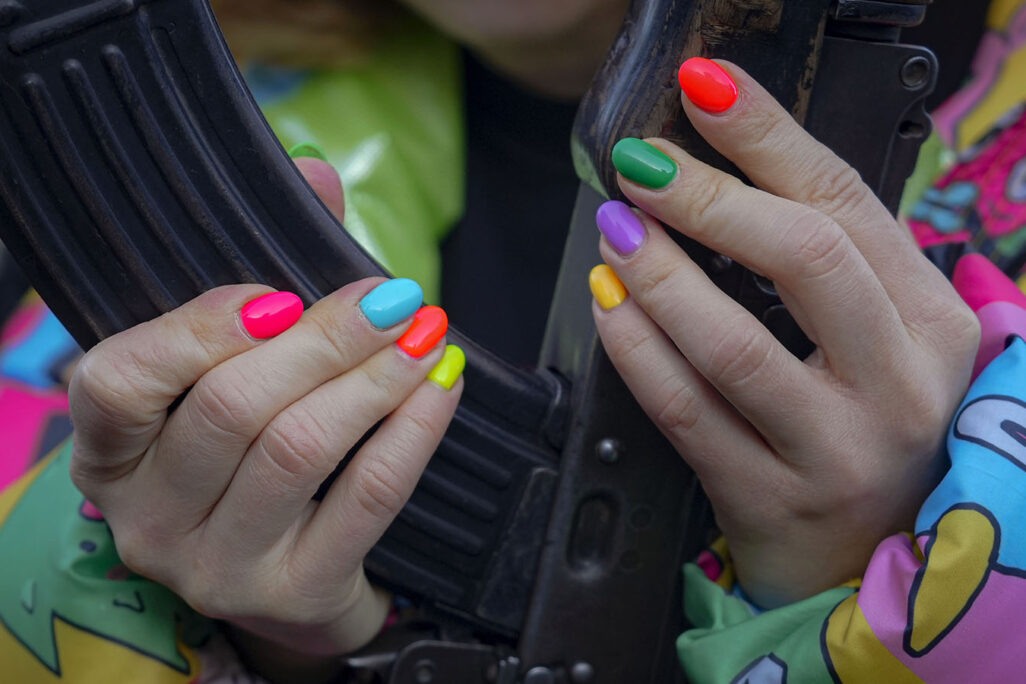
The onset of the war between Russia and Ukraine have put Ukrainian women in the spotlight: they are fighting in the army; they volunteer to help those in need in war zones; they hide with children at train stations; they leave the men who are fighting and cross the borders into neighboring countries as refugees; they have found the courage and resilience that is rare and impressive. Some have already called them “Ukraine’s not-so-secret weapons.”
As the war rages on, the European Parliament, in a gesture of solidarity, dedicated a special event to Ukrainian women marking International Women’s Day.
“I want to commend Ukraine’s incredibly brave women,” said European Parliament President Roberta Metsola at the event. “The women who fight, are forced to hide with their loved ones in bunkers, give birth at metro stations and lead on the front lines. It is a testament to their courage, strength and resilience, even in the most difficult circumstances.”
The First Lady Stands Strong Even in Her Bunker
“I am not hysterical; I don’t have tears to cry. I will be calm and safe,” wrote Ukraine’s First Lady Olena Zelenska, 44, from the hideout where she is sheltering with her two children, aged 17 and 9. According to her husband, President Volodymyr Zelensky, she is second behind him on the Russian President Vladimir Putin’s assassination list.
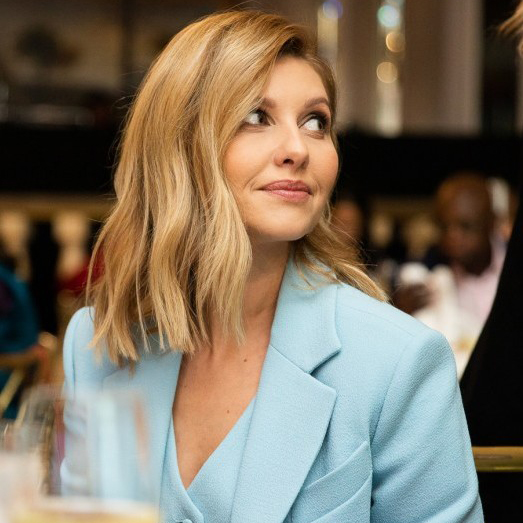
In an interview with Vogue Ukraine in 2019, Zelenska, a comedy and screenwriter by profession, said she was upset by her husband’s desire to run for president.
“I imagine how everything will change, and what difficulties we will have to face,” she said at the time. It is doubtful whether she guessed the difficulties would include Ukraine’s war against Russia.
“I once wrote that women in Ukraine are 2 million more than men, and now it is taking on a completely different meaning,” she was quoted as saying in one of her last days before the war, in an address to Ukrainian women.
Member of Parliament Learns to Shoot a Rifle
The extent of women’s mobilization can be learned from Ukrainian Member of Parliament Kira Rudik, 37, who heads the Holos (Voice) party. Two weeks ago, she posted a surprising confession on Twitter: “I planned to plant tulips and daffodils on my backyard today,” she wrote. “Instead, I learn to fire arms and get ready for the next night of attacks on Kyiv. We are not going anywhere. This is our city, our land, our soil. We will fight for it. So next week I can plant my flowers.”
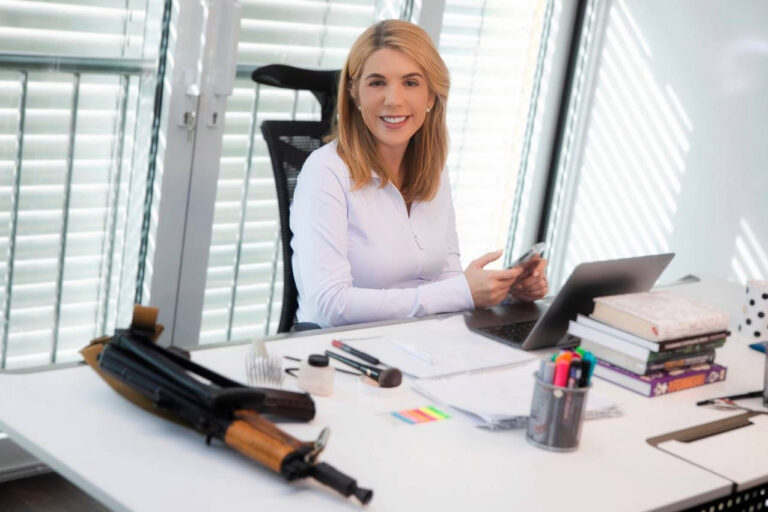
The tweet provoked a media firestorm that even reached U.S. news outlets. Rudik has since been interviewed on many TV stations. In an interview with MSNBC, she explained her decision to carry a weapon: “When Russia declared war on us, I got very angry, and so I got my Kalashnikov rifle and am learning [how] to shoot it … It’s very simple, there was not even a question [about whether not to resist]. Our lives have changed so drastically; it required strong decisions. And they were made.”
“And you will agree with me,” Rudik continued, “that Ukrainians have shown the world how we have surprised the Russians with our ability to fight back… Every night I’m hearing 'tonight Kyiv will fall,' and every morning we wake up and say 'no.' We are still here and we are pushing back… This is similar to the David and Goliath situation, and we are very sure we are David right now.”
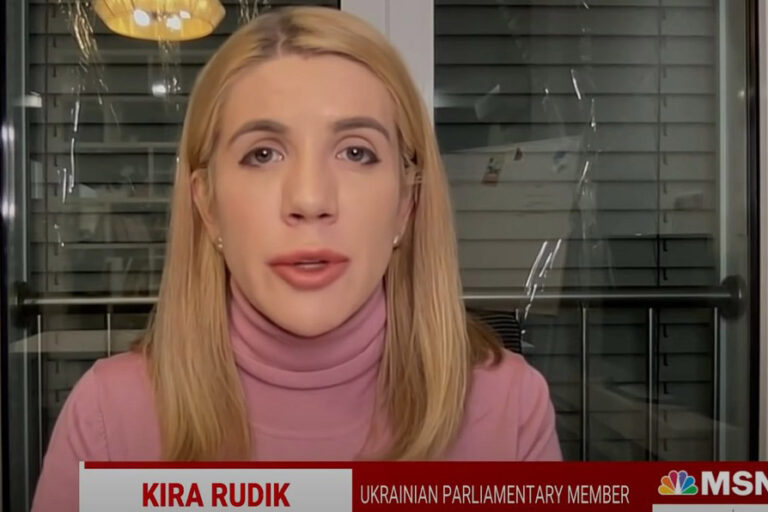
“You’ve never fired a rifle in your life,” the interviewer noted. “Are you prepared to use that gun?” To which Rudik replied: “Yes, I’m prepared to use it. In my resistance crew we have people who fought before and are experienced soldiers, so they are training us through this. Most of this training is how not harm anyone while using the rifle. We’re learning how to assemble and disassemble the rifle, and how to clean it. So only 10% is about actually shooting and the rest about how not to get injured while shooting.”
“It’s important for us to make sure that we can do whatever is necessary for our country…We didn’t do anything wrong. We just wanted to have our own [path] for our country. And [Putin] is coming to us with his forces for what? To instill some Russian propaganda or Russian influence? This is such a stupid and idea and a stupid war,” she continued.
Women in Military Professions
Women carrying weapons is not new in Ukraine. Women have been members of the Ukrainian army since 1993. At first they were only allowed to serve in traditionally “female” positions – as nurses, cooks, secretaries, etc. But since Russia annexed Crimea in 2014, their roles have expanded. Legislative changes in 2018 ensured equal treatment for women and men in the military, and increased the number of conscripts. Women were allowed to serve in combat roles alongside men. In 2020, the Ukrainian army had more than 31,000 female soldiers, 22.5% of the entire armed forces.
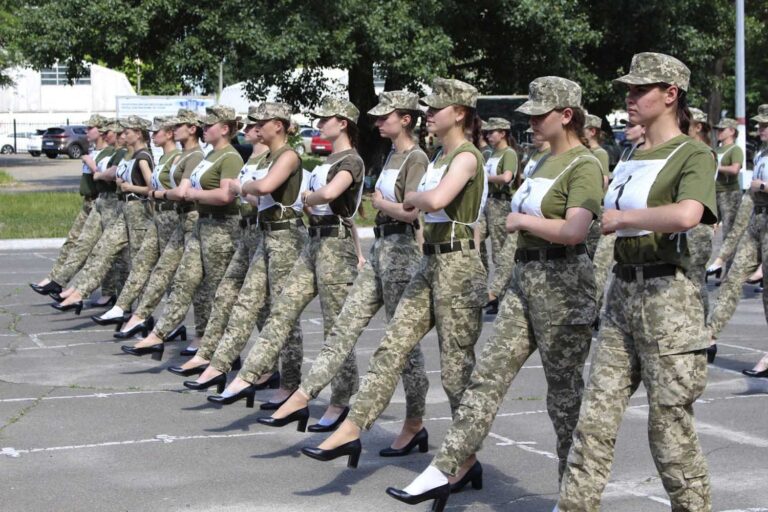
In Ukraine, there is a female representative for gender affairs in the Deputy Prime Minister’s Office. And while patriotism and militarism is the expectation of a country’s citizens during an ongoing war conflict, it is more unusual that these would appear with distinctly feminist perspective. In July 2021, a photograph went viral of female military cadets marching in high heels during a parade rehearsal in Kyiv marking 30 years of Ukraine’s independence. Unsurprisingly, it caused a public uproar.
“The purpose of any military parade is to demonstrate the military ability of the army. There should be no room for stereotypes and sexism,” said three lawmakers in a joint statement. emphasizing that women serving in the military “proved their worth not with heels but with machine guns.” The defense minister was forced to order replacement boots.
“We are Stronger and More Independent than Our Mothers”
But even in times of war, civilian life must not be forgotten. Since the fall of the Soviet Union and the transformation of Ukraine into an independent state that's turned toward the West, the lives of women in the country have changed greatly.

“The transition from being a state in the Soviet Union to becoming an independent state and getting closer to the West, is very influential,” says Karina Rubchinskaya, 27, a native of Kyiv who immigrated to Israel at the age of 15 and returned to Kyiv in 2019.
“It gave a lot of freedom,” she says, “freedom of thought, freedom of expression, in a lot of things. The Ukrainian people are much freer today. We are much less afraid, and it greatly affects women as well. We have the Internet and social media, so you see things from the outside world, it also has a great impact.”
“Women are more daring to dream about things other than what is expected of them, to express their opinions, to want something other than to be the ‘Soviet woman’, whose job is to be beautiful, attractive, raise children, and take on traditional female roles,” Rubchinskaya continues.
She explains that there is a big difference today between Russian and Ukrainian women today, adding that in the former Soviet Union, the stigma was that women dominated the house, since less men were around after World War II.
“These are women for many of whom were daughters of soldiers in the war and grew up without a father,” she says. “We are not the same generation. There is a difference between adults and young women. We are stronger and more independent than our mothers, less erasing of ourselves for our children.”
First in Economics, Last in Violence
Women play a key role in Ukrainian society and in maintaining democracy in the country. They make up 21% of Ukrainian Parliament – a steady increase since 2004 (then 4%), and a bigger leap since Zelensky was elected president.
Their contribution to the economy is significant. According to data from the Well-Being and Safety of Women report from the Organization for Security and Co-operation in Europe (OSCE), as of 2019, women’s participation in the Ukrainian labor market is highest among the 57 member countries, by a large gap: 56% of women aged 15 and over are working. Women also make up 41% of executives in companies in Ukraine, second place among these countries (Moldova is first with 42%). The data however, do not include the Crimean Peninsula and the Donbas region in the Eastern Ukraine.
On the other hand, according to data from the same report, Ukraine sits at the top of the list regarding violence against women: 49% of Ukrainians have experienced sexual harassment; 26% have experienced some form of spousal violence; and 23% experienced physical violence from a present or past spouse. 47% said they do not know who to turn to if they have experienced violence; and 38% of women did not know any of the support organizations in this area.
However, according to Yevheniia Bokovykova, “in recent years, the streets are safer for women. Life for women in Ukraine is much better now than 20 years ago.”
Bokovykova is 25 years old and was born and raised in Kharkiv. Two days before the outbreak of the war, she came to Israel to visit a childhood friend. She’s still in Israel, hoping to return home soon.
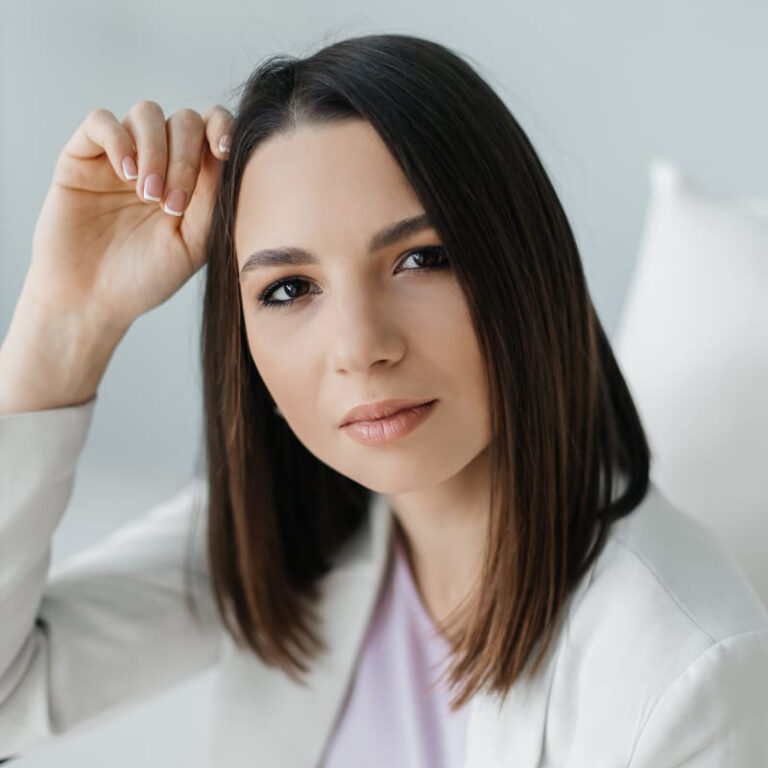
According to Bokovykova, it took Ukraine about a decade to emerge from the influence of the Soviet Union, both mentally and economically. In the last 20 years, there has been a steady trend of improvement in issues related to women.
“The generation of our grandmothers, the war generation, was a very damaged generation,” she explains.
“Sometimes, it seems very difficult for them to understand that life has changed, that it can be better than it used to be. It seems to me, according to my grandmother and her friends, that they have begun to understand this and enjoy life only recently. My 82-year-old grandmother has started going to the swimming pool. She had not allowed herself such things before.”
And it isn't only the grandmothers. Young girls today also enjoy a happier and more egalitarian childhood.
“We put a lot of emphasis on girls’ education,” she says. “My family, for example, never had much money, but my parents invested heavily in [our] education.”
She herself is a dance teacher for girls, and a doctoral student in law.
“Girls will almost always have after-school extracurricular activities such as dance, music, art, and sport. It is very important for both the school and the parents that the girls acquire an education, both primary and higher.”
“They are Independent, Make Money, and Travel the World”
According to a UN report, Ukraine is a signatory to almost all conventions dealing with women’s rights (the Convention on the Elimination of All Forms of Discrimination Against Women; Istanbul Convention Action against violence against women and domestic violence; Beijing Declaration and Platform for Action that; various conventions against trafficking of women and more), except for one treaty: the Convention on Consent to Marriage, Minimum Age for Marriage and Registration of Marriages.
“In Ukraine, women often set themselves the goal of getting married as soon as possible,” says Rubchinskaya.
“They want to find for themselves a man who will buy them everything, who will work as well. Both me and my sister, who is only 23 years old, have classmates and friends who have already gotten married and have children.
“But I also have a lot of friends that have good jobs,” she continues. “Most work two or three jobs. But they are very independent; they make money, travel, and buy what they want and need for themselves. There are lots of women who own businesses too. There are strong women journalists, women on television and radio, managers in big companies.”
“Most of the People Who Volunteer Here are Young Women”
In the same TV interview with MSNBC, Rudik described the broad civilian mobilization effort since the war began, and excitedly recounted how civilians were helping one another. And specifically, how all sectors – civilians, businesses and the military – are now working together.
“We now see in the news how many women go out to stop the tanks, how many women are in the army and there are many who volunteer as well,” Rubchinskaya said.
“Most of the people who volunteer here are mostly young women. They cook food, move things from place to place, buy medicine for those who need it, and administer medical care.”
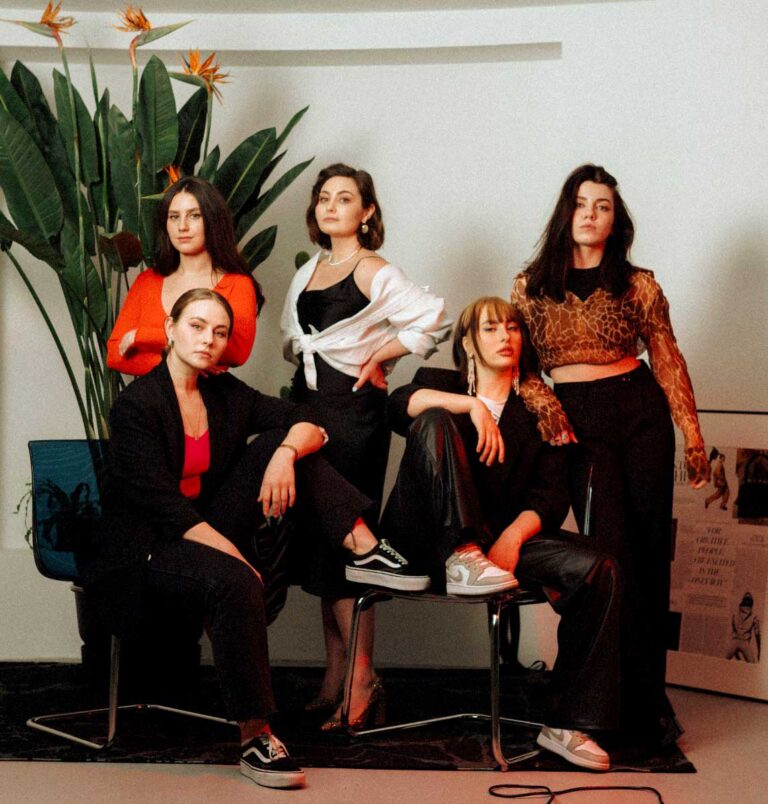
Rubchinskaya herself felt that at the beginning of the fighting she could not sit idly by. She took time off from her jobs (Hebrew teacher, translator for an Israeli web development company) and volunteered with her friends to help.
“Almost all my friends from Kyiv went to volunteer,” Rubchinskaya says. “I have friends that have gone to the borders to help refugees, there are some that have traveled to Kharkiv and the more conflict-affected cities.
“My friend Lilia and I are organizing packages with food and medicine and physically traveling to evacuate the needy, especially the elderly who were left alone in the area after their families were forced to flee. We prepare the food and packages here at my mother’s house and bring it to Kyiv.

“My little sister, Liza, traveled to Budapest and collected more than $15,000 of donations, bought medicine and food and sent it back to Kyiv; Anya and Anya are now in Budapest buying medicine, food and military equipment; Darina volunteers in the city of Dnipro – she raises money and buys everything the people there need.”
“It’s Dangerous to Be a Refugee Woman”
From the border crossings to neighboring countries, Rubchinskaya hears of harrowing stories.
“Since adult Ukrainian men between the ages of 18 and 60 are not allowed to leave the country, most of those who come to the refugee camps are women and children,” she says. “It’s very difficult for families to separate, with men bringing their wives and children to the border and staying behind. Everything there is full of crying of women and children torn from their fathers.”
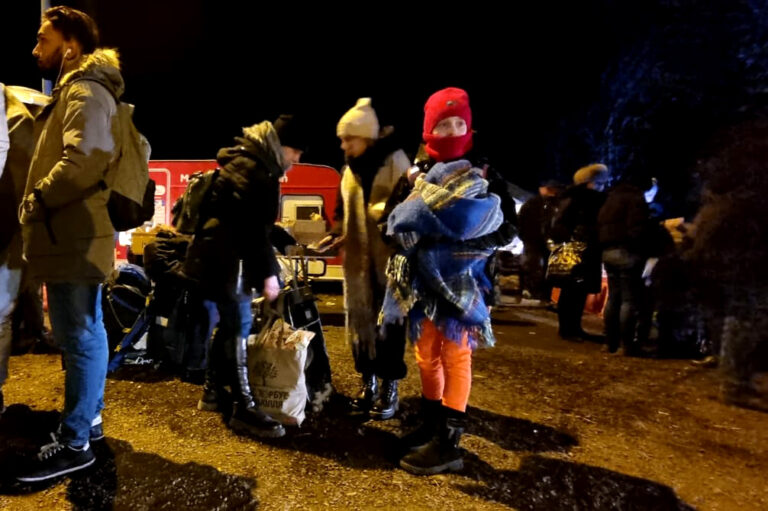
According to one report, about 80,000 women gave birth in the past week without access to necessary medical care. A friend of Rubchinskaya gave birth a week ago in as small town some 20 kilometers south of Kyiv.
“They fled because they thought there would be a hospital with an available room, but they were wrong. It was more dangerous there than in Kyiv,” she says. “She gave birth there in the basement, under heavy bombardment. Now everything is fine, but we were very worried about her. I saw women giving birth right on the train and at the metro stations. That they had no diapers and baby food, they had nowhere to put them to sleep.
“It’s dangerous to be a refugee woman,” she adds. “In recent days, there have been posts and messages on Telegram and WhatsApp warning that there are men waiting at the borders offering help to young girls, and then kidnapping them for prostitution in brothels in Europe. So people have been texting: ‘If someone takes you by force, scream, there are people within the borders who are looking for them and calling the police.’”
“Women are Key to Peace”
In the shadow of the protracted war, which began in Ukraine with the annexation of Crimea in 2014, there is also hope for peace. In November 2020, the organization UN Women launched the country’s “Women Are Key to Peace” campaign, marking the 20th anniversary of the UN resolution calling for the significant participation of women in all peace processes.
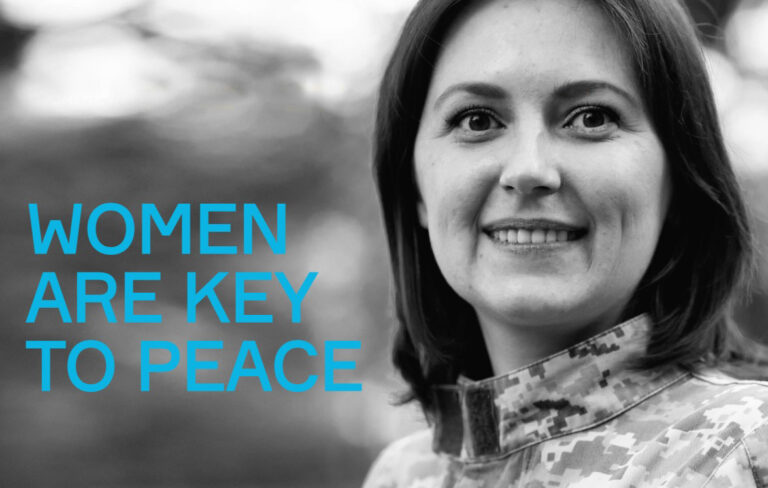
According to the organization’s data, in peace processes involving women as witnesses, mediators and negotiators, there is a 20% higher probability that the agreements will last more than two years, and a 35% higher probability of an agreement lasting 15 years. When women are involved in the process, there is a higher chance that the protests will remain non-violent.
As part of the campaign, videos are published about Ukrainian women assisting in the fighting. For example, Liudmyla Bileka, an actress and paramedic assisting in psychological and social services for soldiers at the front; Maryna Danylova, a teacher in an elementary school in Slovyansk (conflicted-affected city in Eastern Ukraine), reading and distributing books to soldiers.
It is clear that women constitute a critical part of Ukrainian society, during both normalcy and wartime.
This article was translated from Hebrew by Zak Newbart.






